This Week in the Garden: How the plants are faring through summer
There's been some losses, but most are hanging on. Fingers crossed.
If something I’ve shared has helped you in your garden or offered value in some way, and you’d like to contribute, you can Buy Me a Coffee.
Hello! It’s been a while!
It was never my intention to stay away for so long. With the larger projects and planting mostly on hold, thanks to the heat and rain, I took a short break. And here we are, February already.
We had friends over for a BBQ a few weeks ago. Some hadn’t visited for a few months, so they were excited to see how the gardens had progressed.
I found myself apologising for the mess. The wild, overgrown look in some areas. The retaining wall that still isn’t fully planted out. The veggie garden a tangle of spent vines, fruit long since picked, the remainder left in place for the hoverflies still circling and ladybeetles still feasting.
And the funny thing is, our friends didn’t notice the flaws that feel glaringly obvious to us. I could only see what’s undone, while my visitors only saw what’s growing. They see the whole, the effort, the life in the garden – while we zero in on the one area that isn’t quite done or the weeds sneaking through the mulch.
There’s this ingrained idea that a garden should always be in a “presentable” state, as if it’s a finished product rather than a living, evolving thing. Maybe it’s a leftover mindset from the perfectly manicured gardens we see in magazines and on social media. The before and afters perpetuating this idea that there’s an end goal.
But gardens are never finished. They’re dynamic. Constantly shifting, responding to weather, time, and whatever energy we can give them. It’s okay if our gardens are a work in progress. It’s perfectly fine for them to look a little wild sometimes, a little undone.
I read this in Kate Bradbury’s newsletter not long after our friend’s visit. Perfectly timed for when I needed to read it.
“There’s one ‘rule’ of wildlife gardening that trumps all others. It’s that we should be ‘less tidy’, and it’s usually presented as an apology or a compromise, rather than something we should love and embrace. I’ve never understood what’s wrong with a messy garden or allotment, why gardens have to achieve a certain aesthetic, especially all year round. Why can’t they be functional and useful and provide habitats and then occasionally be beautiful? Why can’t they be honest?”
How it’s all faring in the summer
Gardening has been nearly nonexistent since December, when we had that mad dash to get as much done as possible before Christmas. We’ve had a few weekends of general maintenance – weeding, watering, keeping the veggie beds ticking over. But no new planting. Not in this heat. And rain. And humidity. Oh, the joys of a Southeast Queensland summer! The likelihood of newly planted natives surviving the alternating scorching days and torrential rain is slim. So I figure it’s best to wait until March brings cooler weather to really get stuck back into landscaping.
Every morning, while making coffee, I stare out the kitchen window at the corridor garden. Knowing I need to do some damage control soon. Some parts of the 20-metre stretch are thriving, others not so much.
The weeds are bursting out through the carefully laid Teatree mulch. The few patches of Viola that survived this brutal summer are tangled with clumps of grass. The Pratia have given up entirely. It definitely did not like the combination of heat and humidity. Now just sad, browning mounds with zero chance of revival. Even the Lomandra, thriving elsewhere in the gardens, decided this particular stretch wasn’t worth the effort.
Looking back, I can see the mistake. I planted at the tail end of winter, when the days were cooler, the shade more generous. I didn’t think about what would happen when summer rolled in with ten hours of relentless sun.
The upside? I get to plan this whole section again. A fresh start, a new excuse to pore over plant lists and rethink what belongs here.

Renovation updates
The alfresco is (almost) complete. It’s such a joy to spend time out here. It was put to good use over Christmas and January with lots of get-togethers with friends and family. A few more plants needed for the little garden, and some timber doors for the front of the BBQ. But they’ll come in time.
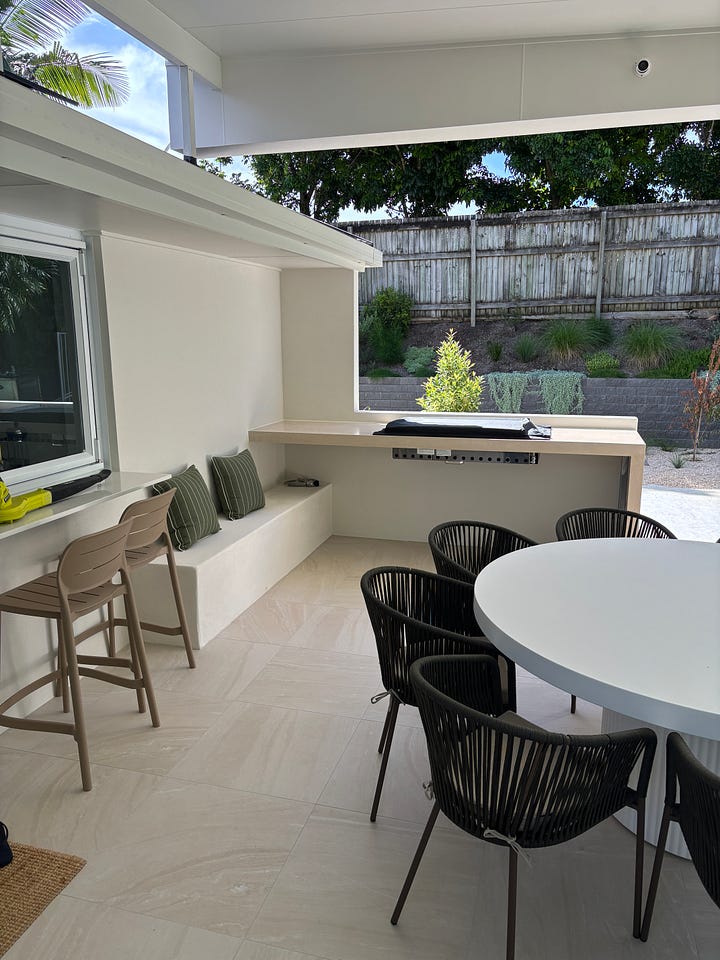

The rectangle pavers for the rock garden finally arrived after a two-month delay. Hoping this weekend will be the weekend we finally finish the rock garden. Fingers crossed. Weather (and motivation) permitting. A theme of this newsletter over the last few months.
An upside of all this rain means we’re watering less, which is a relief. In a yard as large as ours, watering the newly planted sections takes a lot of time. When the lawn was installed, we had to water twice a day for the first few weeks, which got me thinking about irrigation for the gardens. Having irrigation set up in some of the harder-to-reach areas will lighten the weekly workload as we move on to plant new areas. I have a few ideas about what we’ll install, but I’d also love to hear about some of your experiences with irrigation – what you used, tap timers etc.
The most unexpected visitors
Mid-January, we woke to unfamiliar honks right outside the bedroom, only to find a Magpie Goose family decided our backyard was a good place to hang out. Six adults and around twelve goslings. These birds mate for life; sometimes, a second female joins the pair to co-parent. Maybe this lot is practising communal child-rearing. It takes a village, after all.
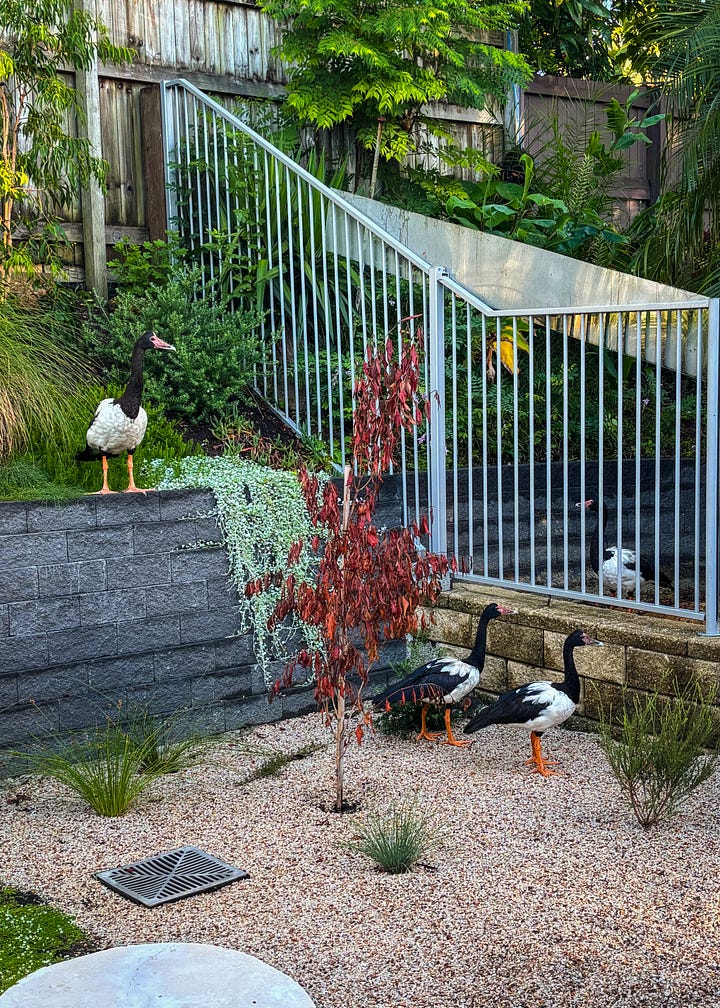
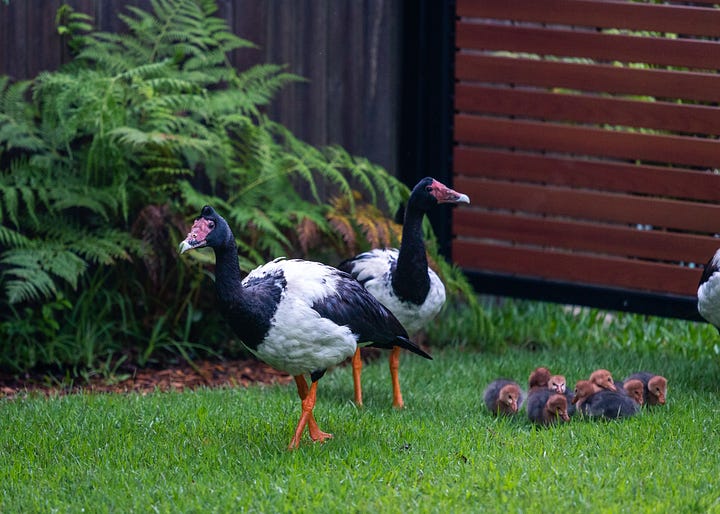
We gently escorted the feathered family back out to the front yard. But they returned the next morning and the next. Then another. Four days in a row. Each day making their way a little further into the backyard. I realised they were determined to get up onto the retaining wall, but the goslings, of course, couldn’t reach. The adults seemed fixated on an invisible path they couldn’t follow.
Have you ever seen one of these up close? They’re huge!
I’ve talked about wildlife corridors before, but what do they really look like in the suburbs? Possums scramble over fences, birds fly, lizards and frogs squeeze through gaps in the fence. But large birds like Magpie Geese? They can fly, but the goslings can’t and will often find themselves in precarious situations. Last year, while we were renovating, Dave rescued half a dozen babies from a drain out front of the house. Aggressively pecked by the parents, seemingly ungrateful at his attempts to save their wayward offspring.
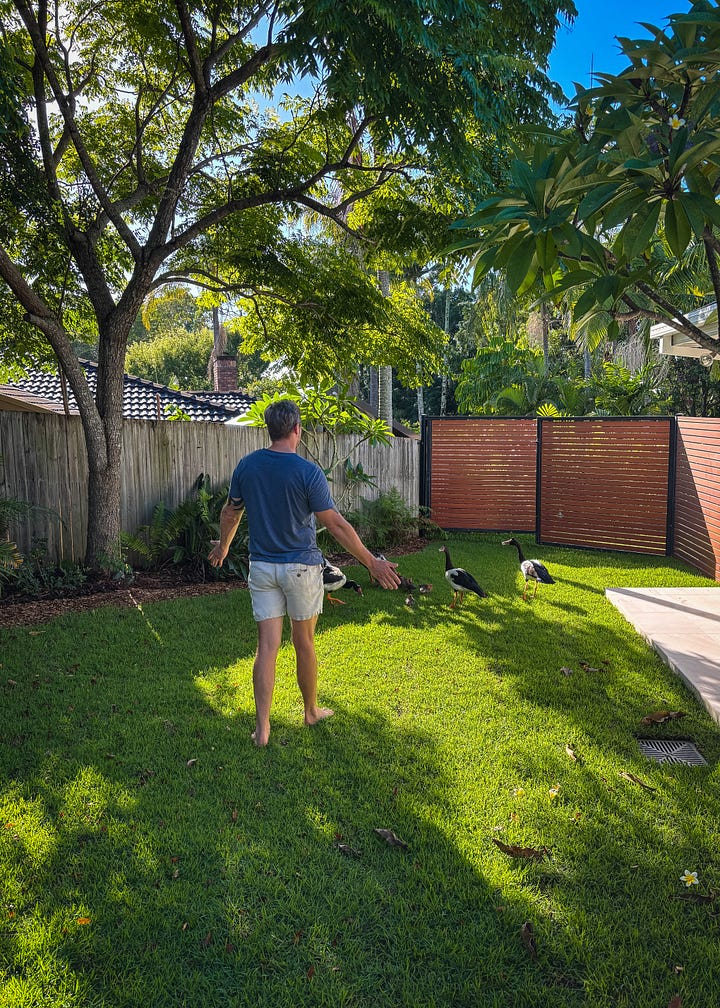
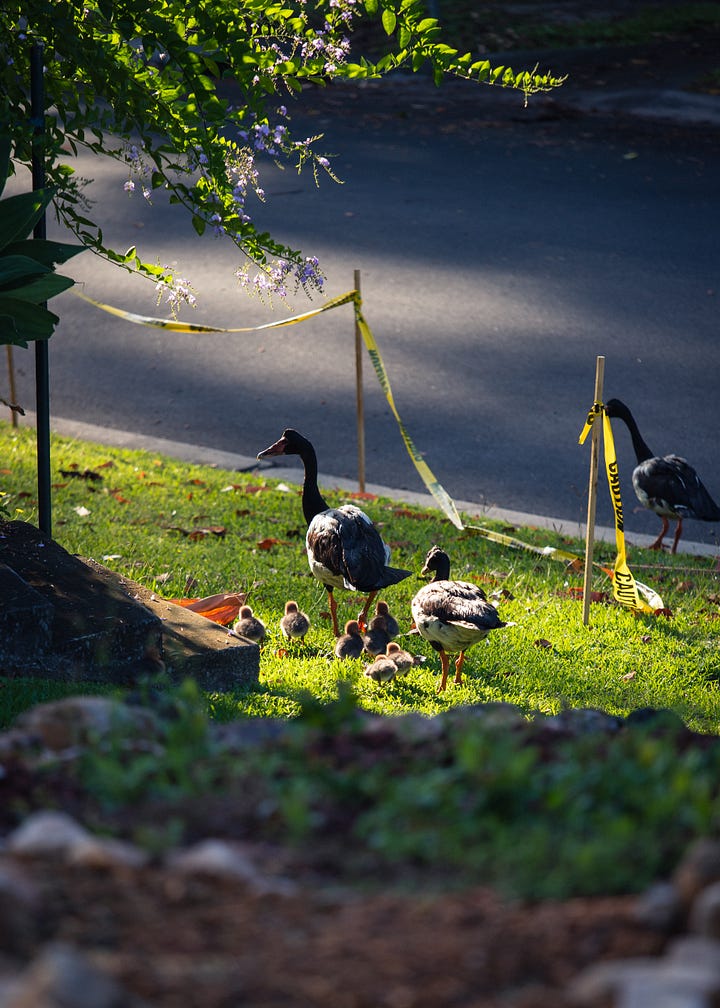
I called Wildcare, not sure what they could do. As suspected, not much. It’s up to the animals to figure it out. Day five, I braced myself for the new morning ritual of ushering the birds out the back gate, but they never returned. I’m hoping they found their final destination safely.
This week in the garden
Let’s catch you up on the last month and all the good things happening in the garden.
We have a lawn in the library garden! Zoysia Sir Grange. It has that soft, fluffy look I was after. It feels ironic to have ripped out lawn in other parts of the yard, only to have new lawn installed in this area. But this area was completely destroyed by machinery in and out over the last year. Every time it rained, it turned into a giant mud patch. Now lovely and green, Charlie is enjoying having a place to roll around.
The plans for the rendered seat in this garden were axed after an eye-wateringly expensive quote. We’re not up to a major DIY. So this space will stay as is, with the garden along the edge. Next up, remove the rest of the Golden Cane palms and replace with natives.
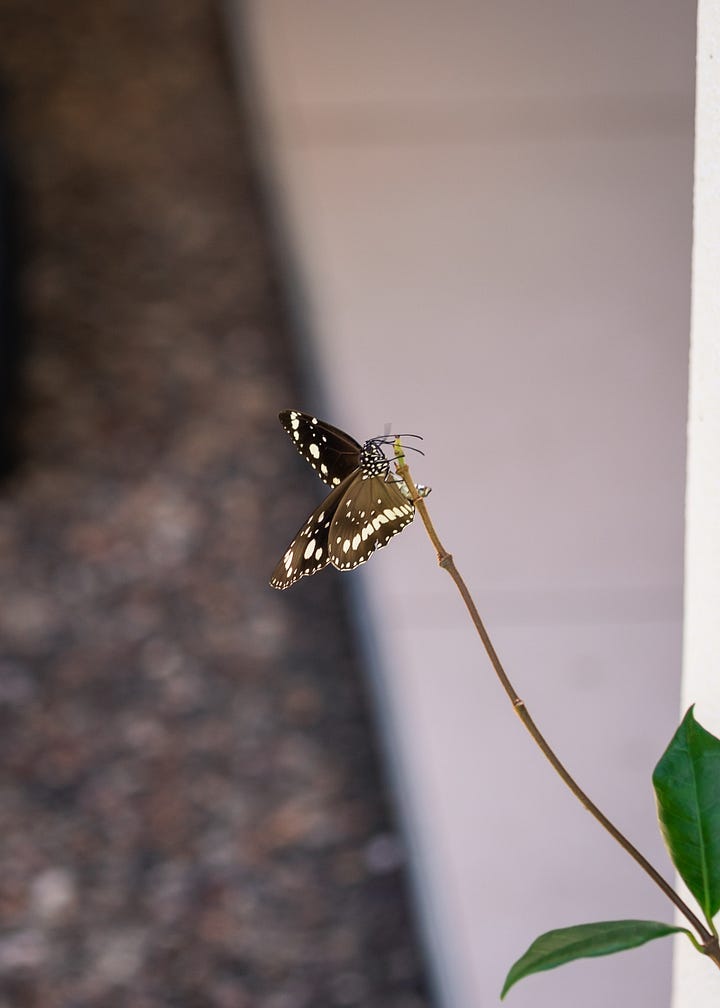
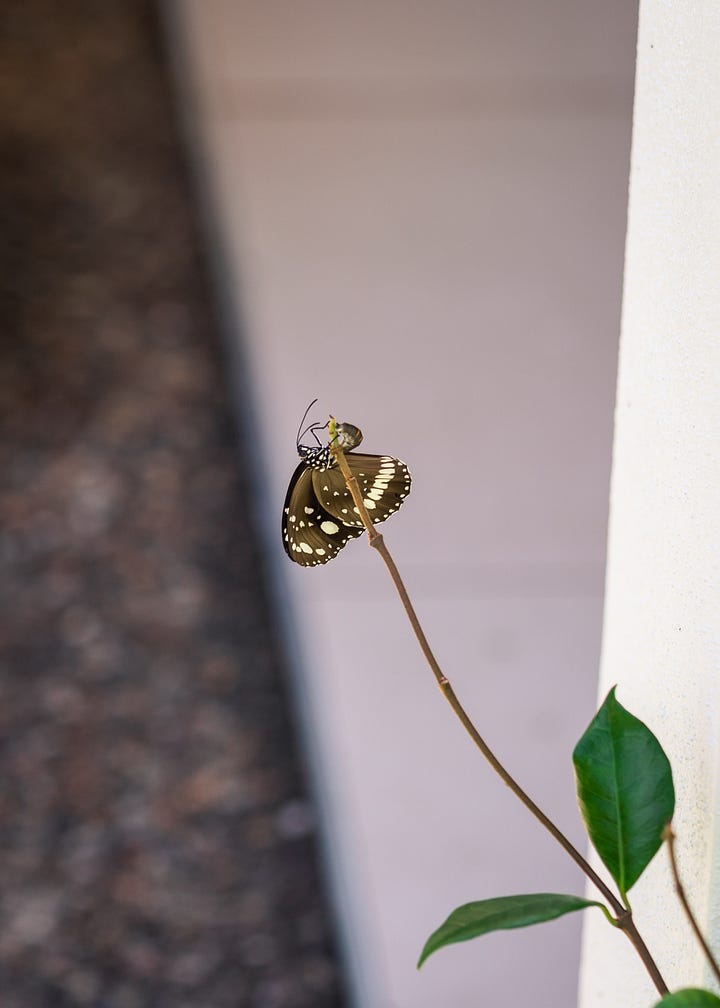
The other day, I noticed a Common Crow butterfly flitting about. I grabbed my camera and wandered outside, just in time to capture the exact moment it laid an egg on the tip of a Star Jasmine vine. The shot’s a smidge blurry, but what a moment! I watched the egg for a week, excited at the prospect of seeing a caterpillar start a new lifecycle. Unfortunately, one morning it was gone – I suspect a meal for someone else.
Planting for butterflies is next on the agenda. It’s great to fill a garden with flowers to attract and feed butterflies. Offering a quick refuel stop in your garden. But we also need to grow plants their caterpillars can eat. Nectar flowers keep adult butterflies happy while they’re on the move, but host plants support the whole life cycle. Eggs, caterpillars, pupae. Without host plants, there are no new butterflies. Somethign I’ll deep dive into more as I learn.

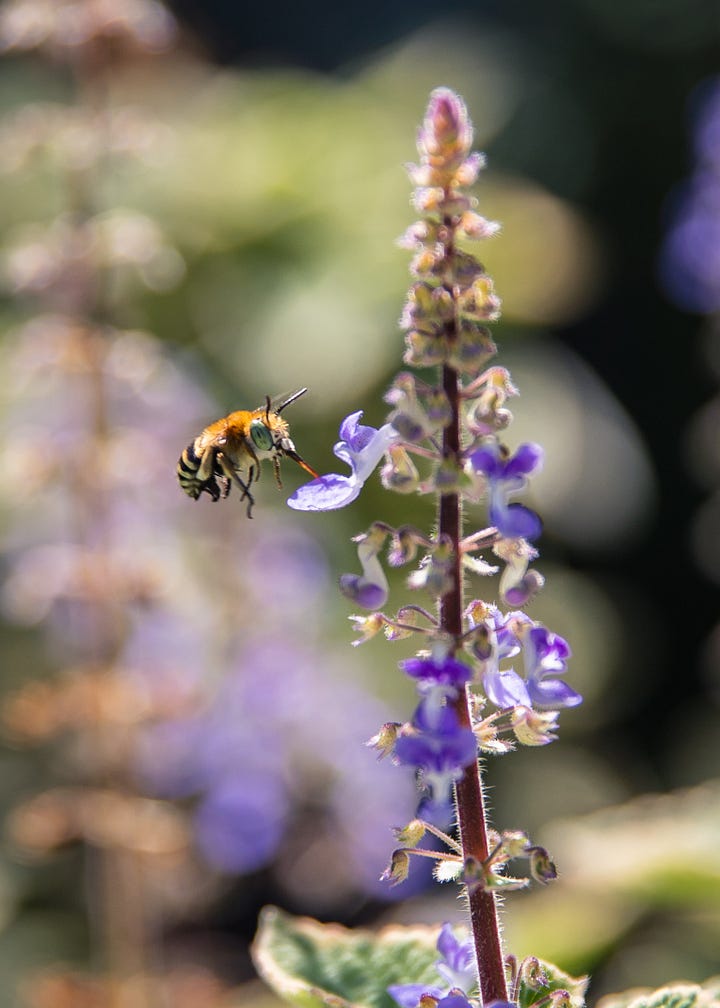

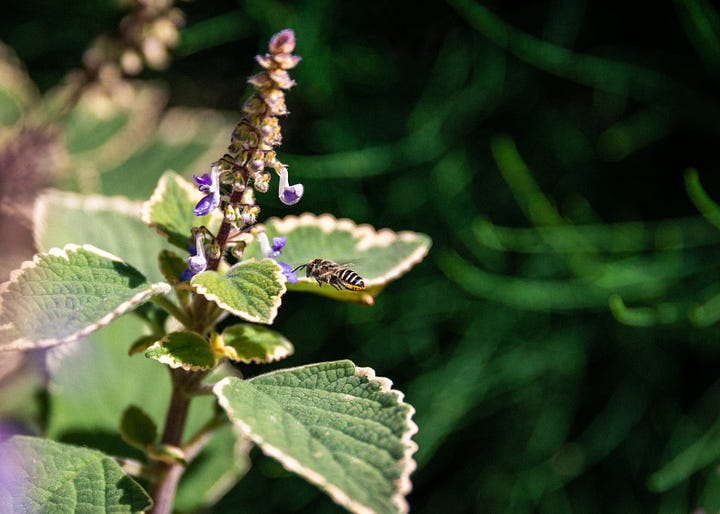
The Plectranthus (argentatus aka Blue Spires) has claimed the back corner near the greenhouse. Two separate plants now leaning into each other. In just two months, they've tripled in size, showcasing their resilience. A seriously hardy and beautiful native. One I highly recommend planting. It feeds the bees (the Blue Banded and Leafcutter bees adore it), shelter for moths and a place for them to lay their eggs. The caterpillars nibble the leaves, and the Noisy miners swoop in to eat the caterpillars and moths. A small food web in action.
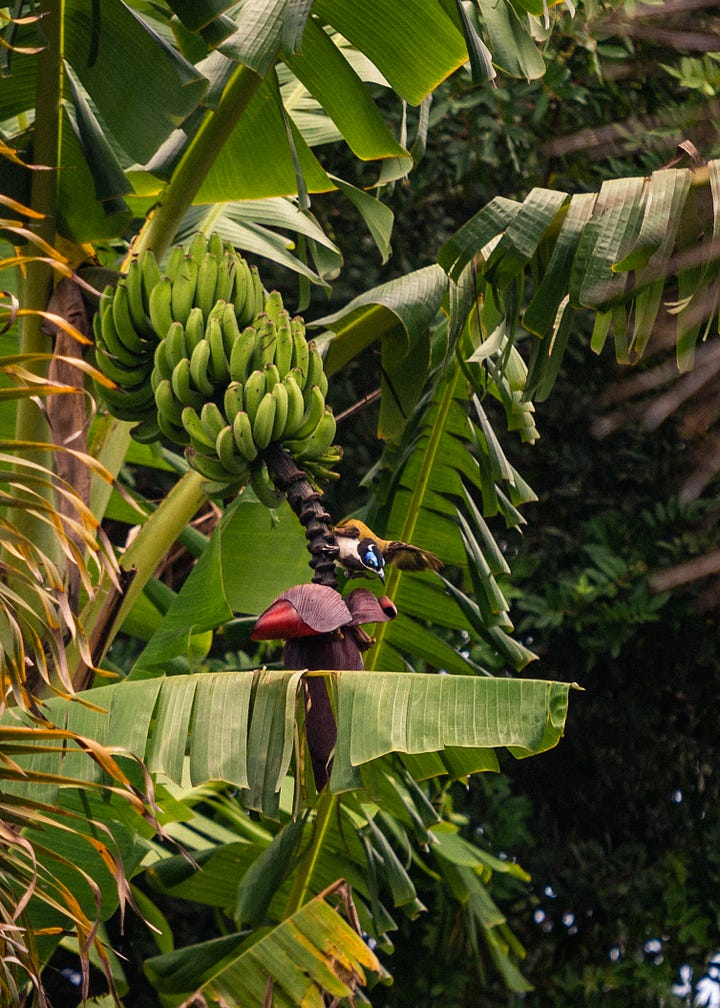
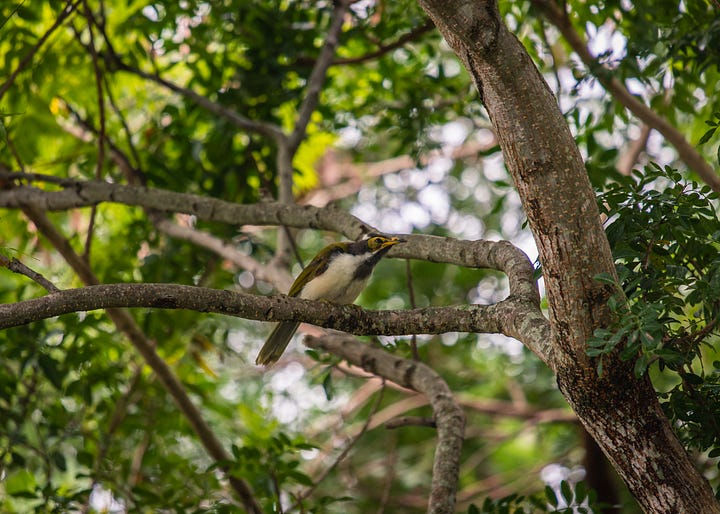
New bird babies have dominated the backyard this past month. A Blue-faced Honeyeater on the neighbour’s banana tree. I learnt the juveniles have yellow faces that darken to blue as they mature. The Currawongs have two chicks. The Kookaburras stopped by with a chick bigger than them!

The pair of Magpie-larks - who we’ve lived alongside in harmony for the last nine months - brought two new offspring into the yard. They’re painful. Noisy, territorial, and constantly flying into the lounge room window to peck at their own reflection. They’ve since been kicked out of home just this week. We witnessed Mum and Dad’s tolerance for the youngsters wearing down day by day. Now they (and we) are enjoying the peace of being empty nesters.
The mango tree behind the pool is fruiting. These are the good mangoes, not the stringy kind. They’ve been a feast for bats and birds and water dragons. We managed to snag a few for ourselves – I chopped them up and froze for future smoothies.
The wildflower patch has finally exploded! It’s a little chaotic, and some flowers never emerged. I’m disappointed not to see any cosmos, but it’s still a feast for the bees.
The resident Water Dragon has taken a liking to the large compost pile at the back of the yard. It started as two piles. The first used in the various garden beds. The second sitting there for the better part of a year. I’d planned to break this one down too, but now it might stay a little longer. I throw him odd strawberry or grape, and slowly, he’s getting used to us pottering around the yard and doesn’t startle as much.
The Chrysocephalum (aka Yellow Buttons) are exploding and self-seeding. I’ve passed through two full seasons watching them flourish. I’m preparing for the end of summer trim soon. If you’re growing them too, here’s a handy guide on trimming and care.

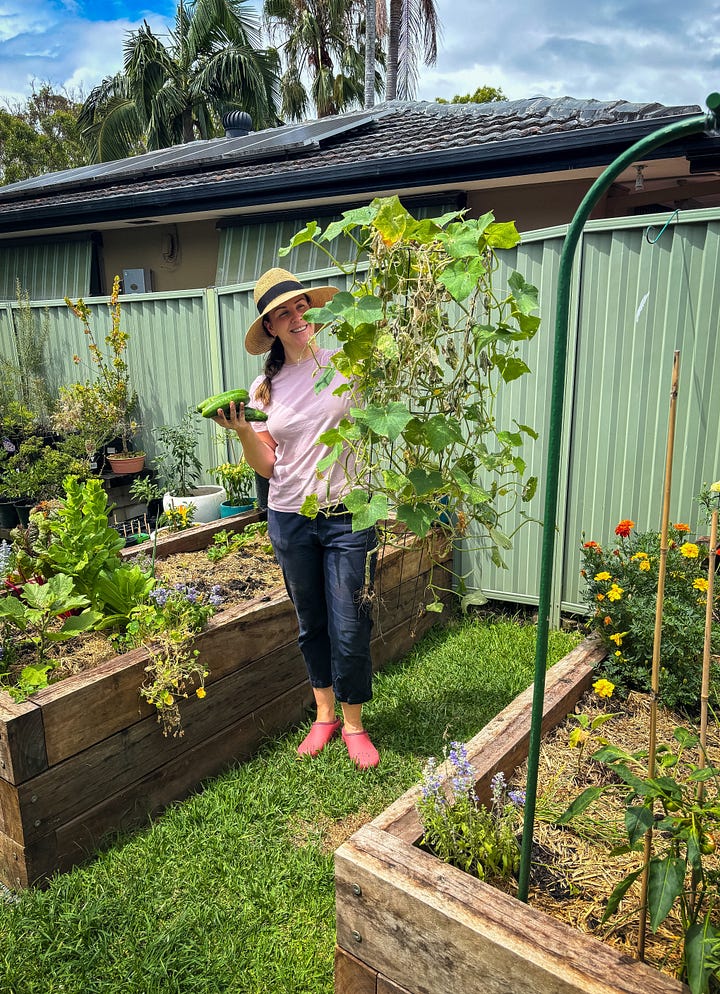
Taking advantage of the cool mornings to work on the veggie beds. The summer crops have been disappointing this year. Except for some lettuce, a few herbs, and a single, overachieving cucumber plant, producing more than we could eat. Especially since Dave detests cucumber. Have you seen those videos where people leave a cucumber on the floor, and their cat leaps away in terror? That’s Dave. I ate what I could and shoved cucumbers into the hands of departing friends and family. Here, take a cucumber, they’re delicious!
A few weeks ago, I planted cucamelon and set up a trellis for it to climb. It’s going nuts. Maybe the novelty of a melon-shaped fruit will trick Dave’s tastebuds into liking them.
More of the garden as I watch and learn how the plants grow (and some die) and the animals popping in over the last month.

Garden adjacent
A space where I’ll share the books, garden inspirations, and helpful finds I come across in my daily wanderings – things I love and think you will too.
Garden Inspo: If you find yourself in Melbourne, take a detour to the Skyline Carpark at Fed Square and check out this Test Garden. It’s part of the MapCo project for the new Laak Boorndap development. I love projects like this – gardens designed not just for aesthetics but for resilience, biodiversity, and people.
Buying: The Merry People Billie clogs. Life-changing. (You can spot them on my feet in the veggie garden pic further back.) They’re perfect for slipping on and off as I dart between the house and the garden. Sturdy enough for muddy days, comfortable enough for all-day wear, and, crucially, they actually look cute. I’m already dreaming about winter when they’ll replace my usual thongs and perpetually wet feet. (This is an affiliate link.)
Reading The Natural Gardener by Richard Unsworth: An instant favourite. This book is for anyone who loves the idea of a garden that looks effortless but is actually designed with care and intention. Brimming with inspiration and practical ideas that work in Australian gardens. If you’re in the ‘stare at your yard and feel overwhelmed’ phase, this one’s for you.
More Reading Visionary by Claire Takacs: Visionary is one of those books you leave open on the coffee table, flipping through whenever you need a dose of inspiration. Claire Takacs is one of my favourite garden photographers, and this book is gorgeous.
Clever Invention - Cane Toad Tadpole Trap: Watergum’s Tadpole Trapping setup is clever – a pheromone-based lure that tricks cane toad tadpoles into a trap before they ever get a chance to grow into full-blown pests. It only targets cane toads, leaving native frogs unharmed. Watergum also runs online training courses if you want to get serious about cane toad control. Watch it in action here.
More This Week in the Garden:
This Week in the Garden: The Rock Garden
Two Saturdays ago. Sweat steadily dripped from my nose, sliding down my neck, soaking into the damp patch already spreading across the front of my t-shirt. It was 7:30 a.m. The sun was already blazing, a reminder that summer had all but arrived on the Gold Coast.
This Week in the Garden: Sharing Our Space With Wildlife
Plop. A seed pod dropped into the pool, interrupting my reverie and shattering the still surface. Oh, for fuck’s sake. I’d spent the afternoon scooping dozens of those large pods from the bottom of the pool so they didn’t block up the pool cleaner.





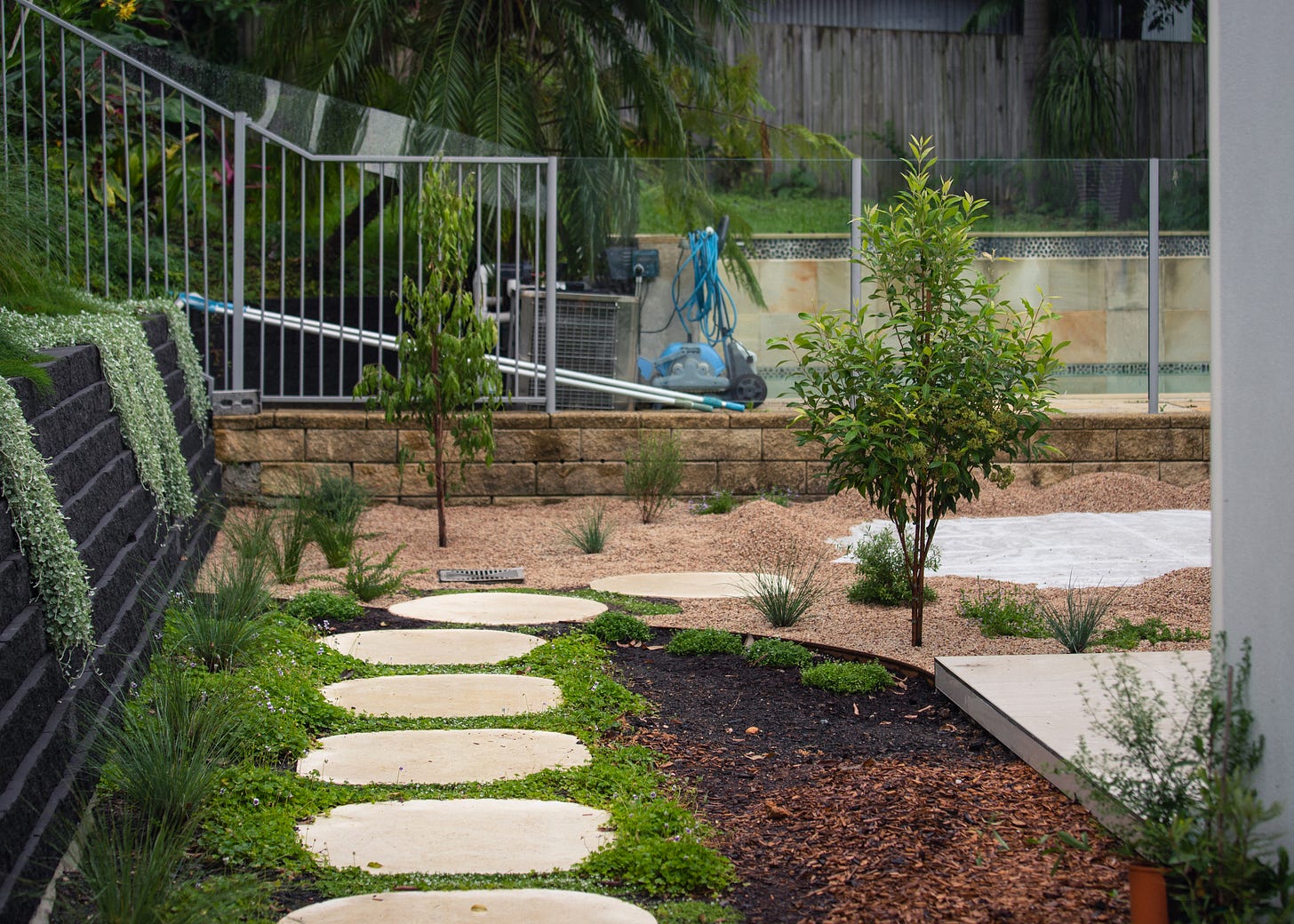

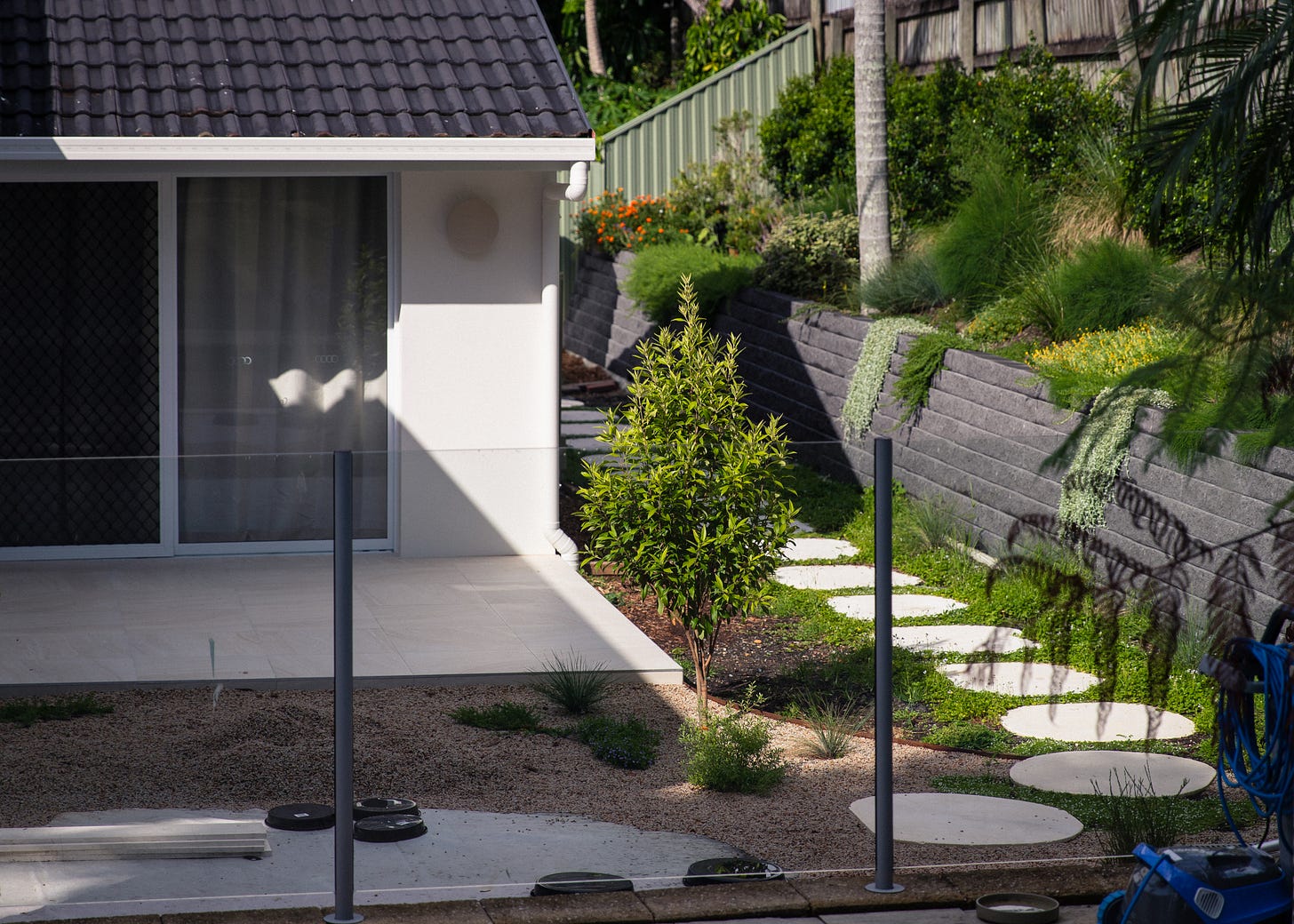

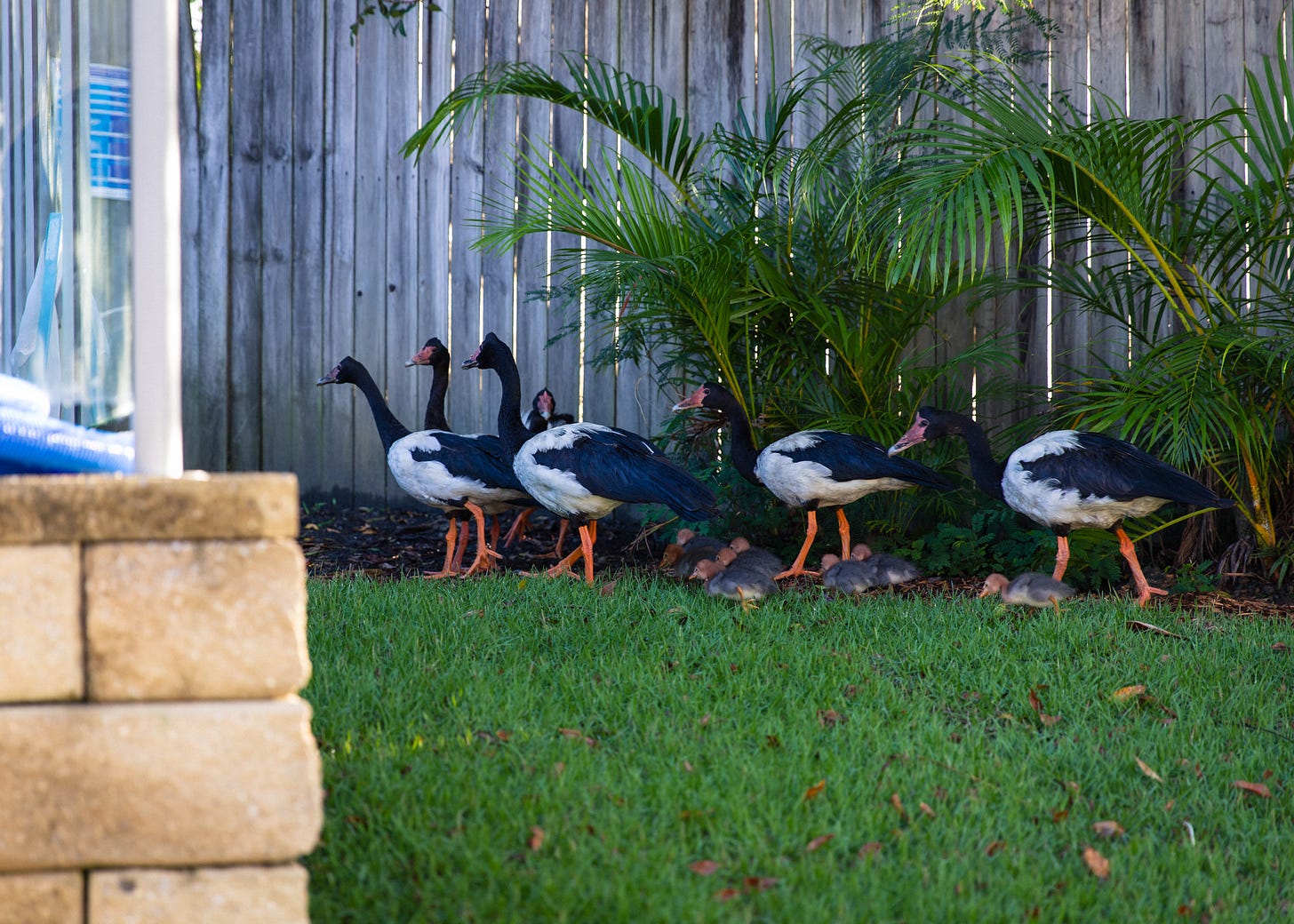
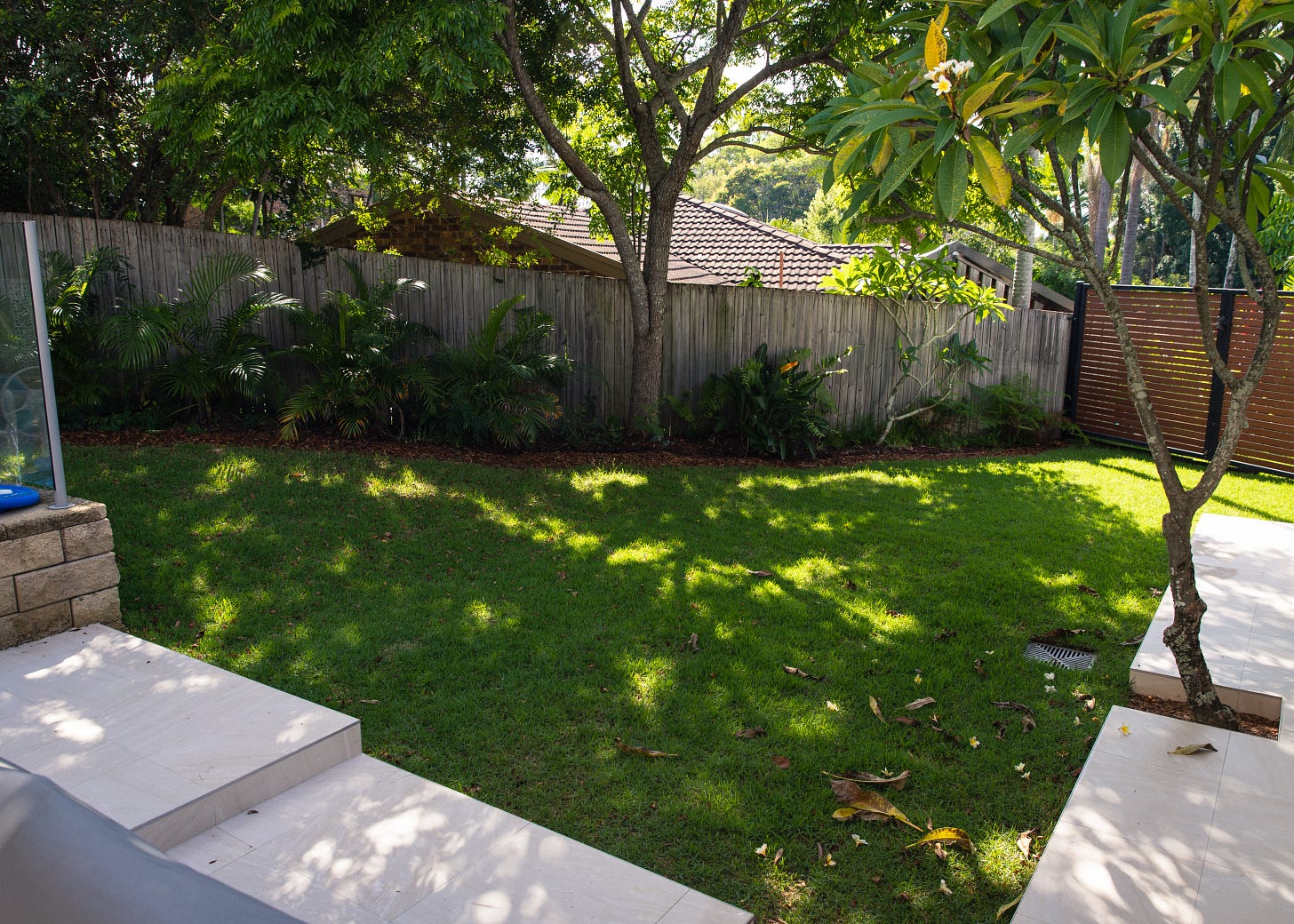



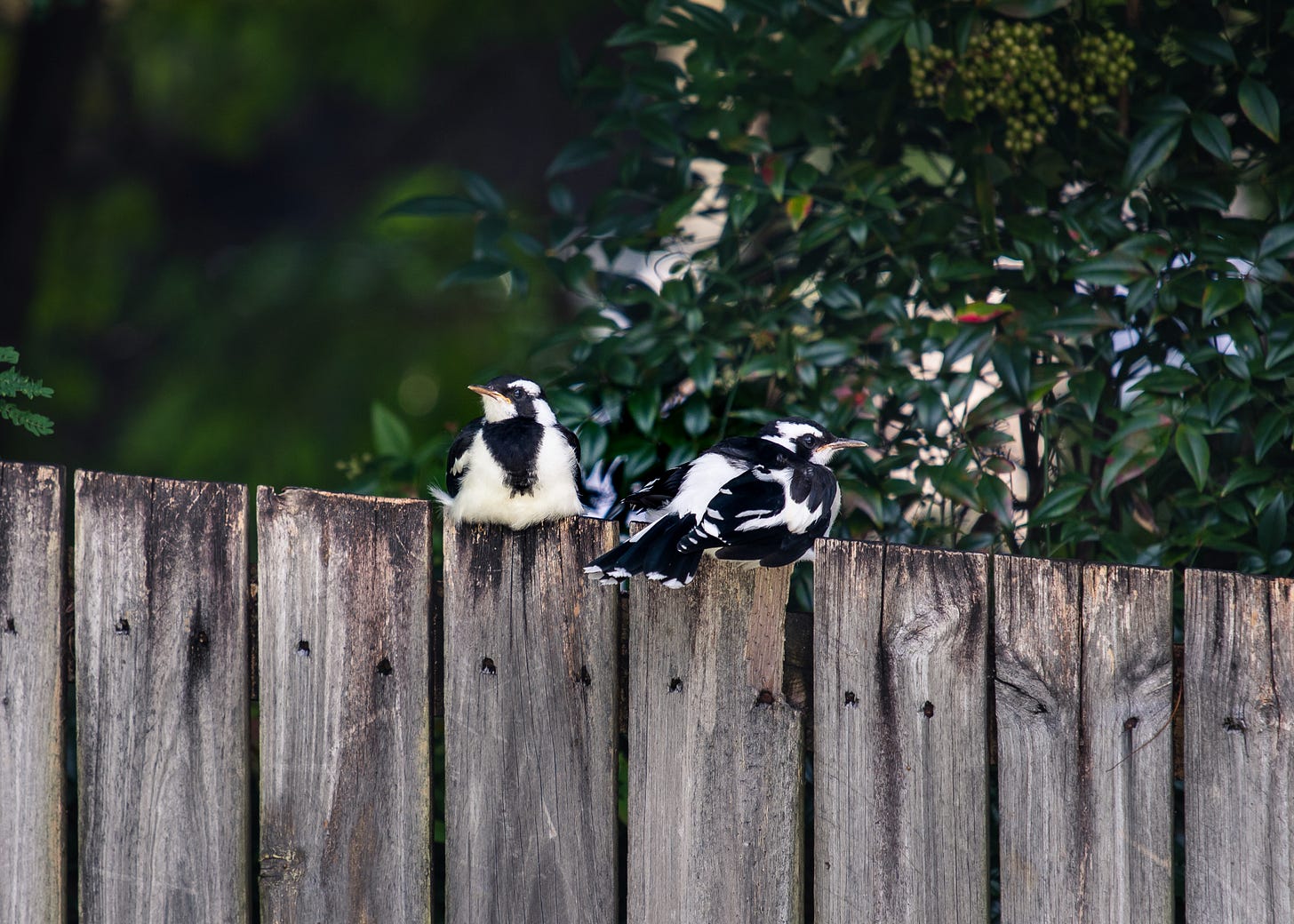
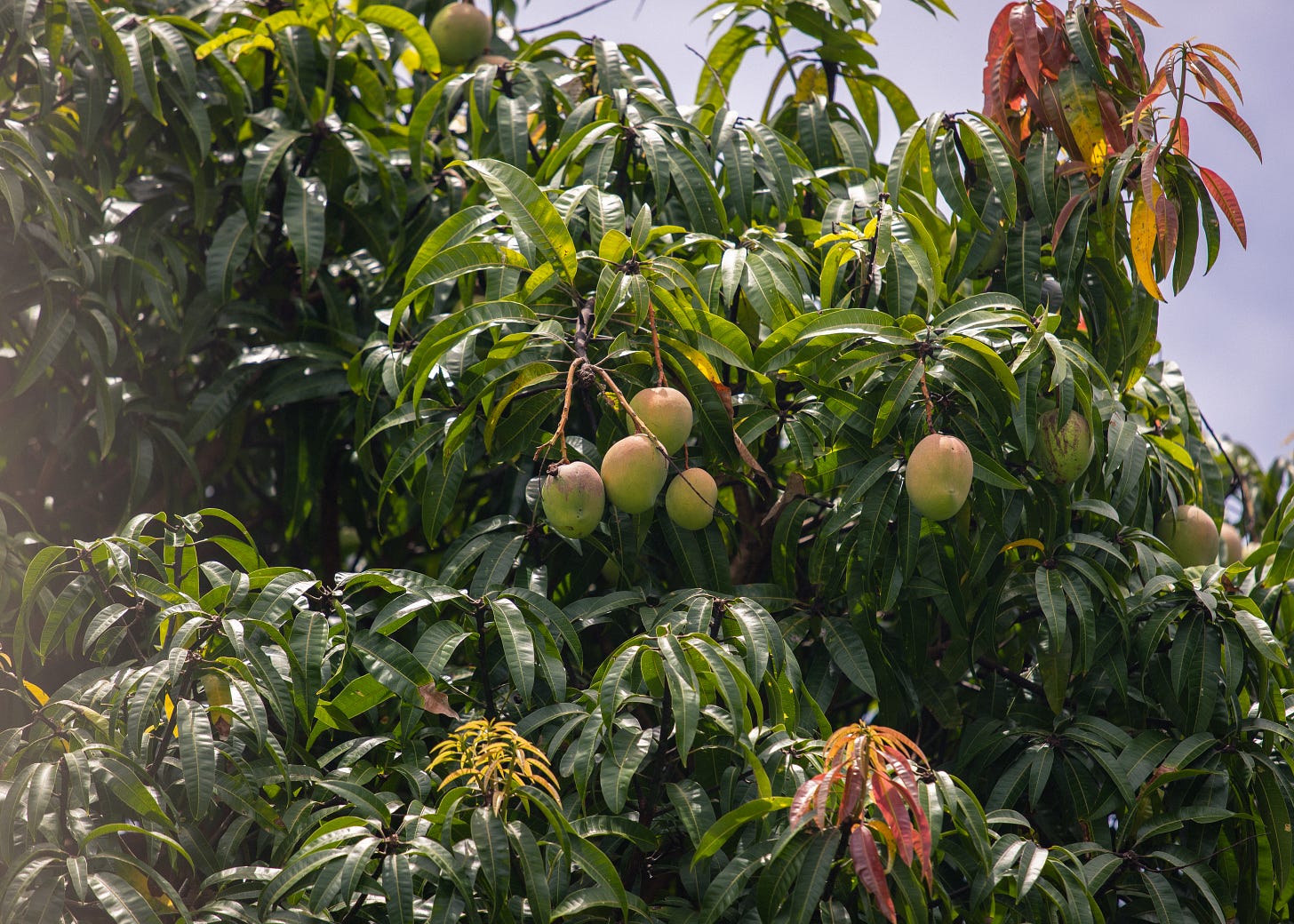
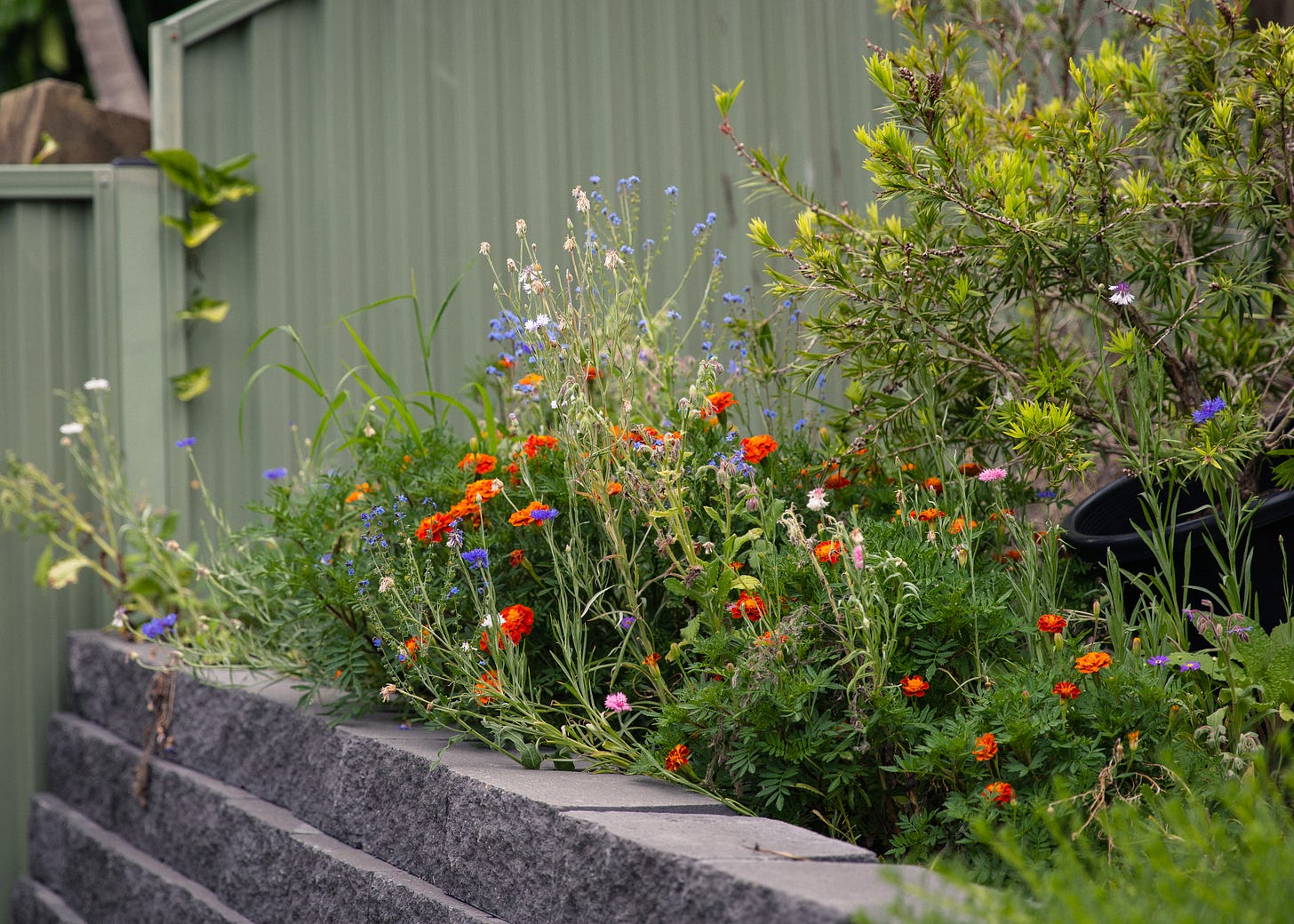



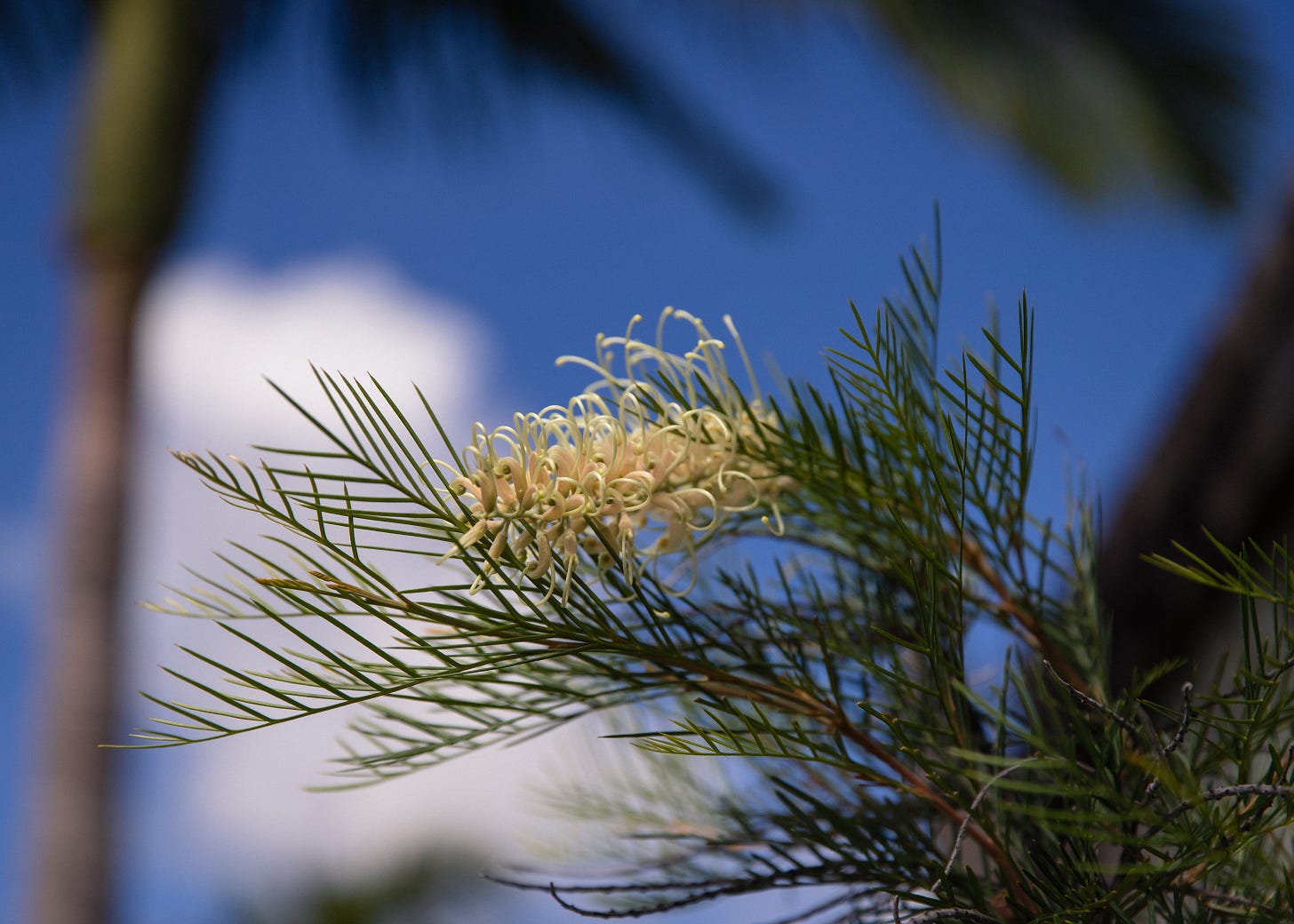

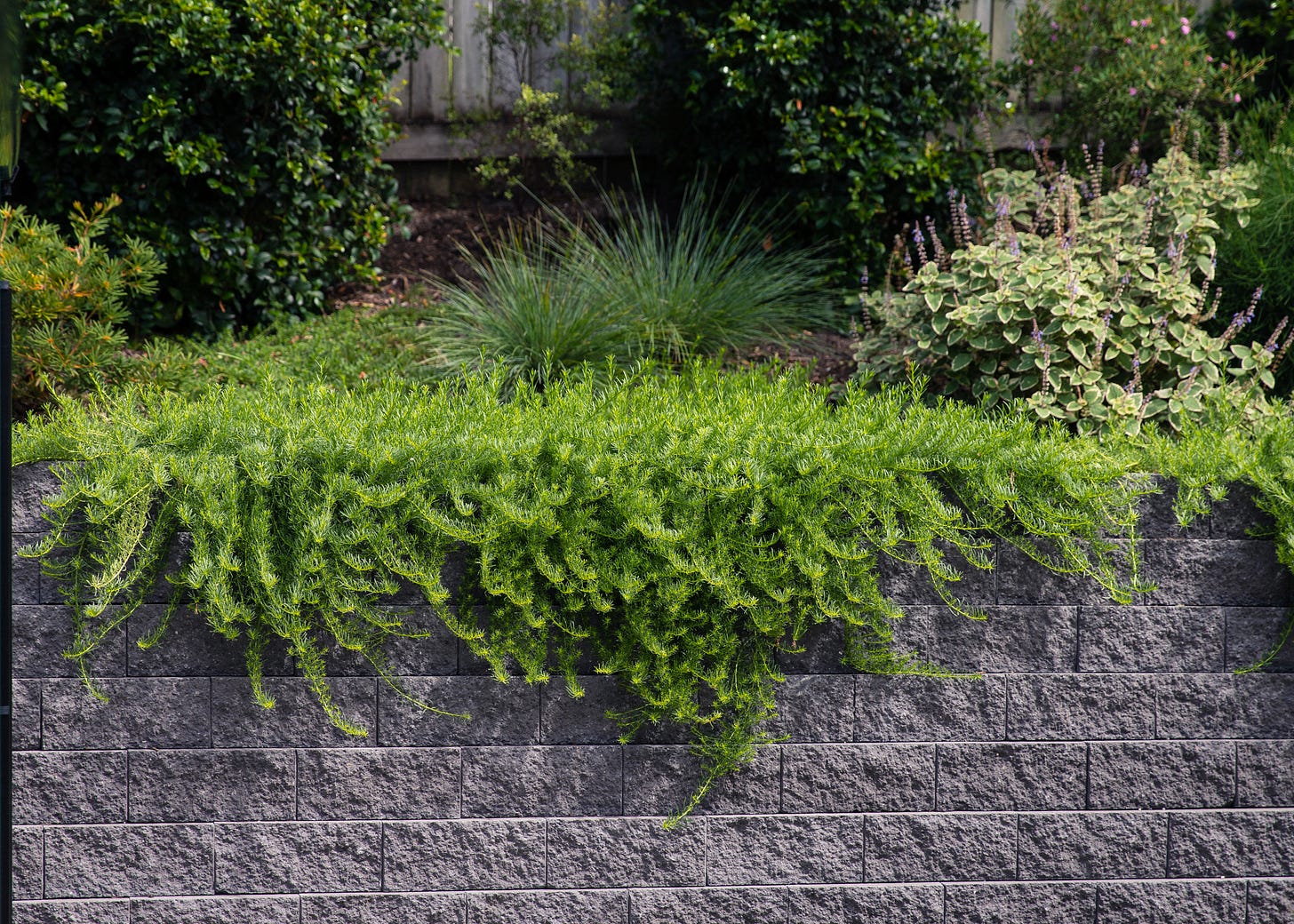




Another wonderful article Kira, thank you for sharing. I love your wildlife updates (Magpie Geese - wow!). Thanks for the reminder that we gardeners tend to focus on the bits that aren’t working and not the whole picture! Thank you also for the fantastic resources you slip into your writing. Always looking forward to your next instalment ☺️
Wonderful blog as always, Kira! Summer gardening has left me drained and I checked out in late January.
I need to do a major overhaul of 3 sections of garden because they've just gotten out of hand and are most scraggly and spent (SEQld vibe at this time of year).
Very thankful to get back into reading your blogs. Your garden is stunning and your words are on point. Thank you.